Hello from Air Canada Signature Class! I’m writing from aboard Air Canada 787-9 business class, returning home to Vancouver after a week in Ontario.
Last week, I had also flown Air Canada business class on the 787-9 from Vancouver to Toronto. It was my first flight since the beginning of the pandemic, and a long-awaited way to kick things off for a new era of travel.
Officially, this is a review of the outbound journey, with a few bits and pieces from my return flight on the same aircraft.
Ricky has already covered the 787-9 in a previous review, so I’ll touch on the aircraft and seat, but mostly focus on my first impressions of Air Canada Signature Class with an emphasis on the COVID-19 experience for domestic trips.
In This Post
Air Canada 787 Business Class – Booking
Whether visiting family in Ottawa or shuttling to school in Montreal, I grew up flying transcontinental in economy. I’m used to it and don’t mind it, so when I splurge on a business class redemption, I’m sure to make it count.
For both my outbound and return journeys, I booked on a Dreamliner. If I’m going to pay the surcharge for a domestic business class ticket, I always look for a widebody aircraft with Signature Class.
I booked the outbound from Vancouver to Toronto for 27,500 Aeroplan points + $33.73, and the inbound from Ottawa to Vancouver (via Pearson) for 24,900 Aeroplan points + $54.38. (Initially I’d booked Vancouver to Ottawa direct for 25,000 points, but opted to cancel that ticket and add a few days in Toronto at the last minute, separately making my way to Ottawa afterwards.)
Anything in the ballpark of the “old” Aeroplan price of 25,000 points for a one-way transcontinental flight in Signature Class is considered a win in my books. I didn’t actually check the cash fares for these tickets, but anything above $600 would’ve exceeded our target valuation of 2.1 cents per point.
My business class tickets came with access to the Maple Leaf Lounge, priority security, and priority Zone 1 boarding, all of which I enjoyed throughout my travel journey. I was relieved to have a bit of extra time and space to make my way through the airport on my first trip of the pandemic era.
Air Canada 787 Business Class – Cabin
Air Canada Signature Class is configured in a 1-2-1 layout, with eight rows of seats on the Boeing 787-9.
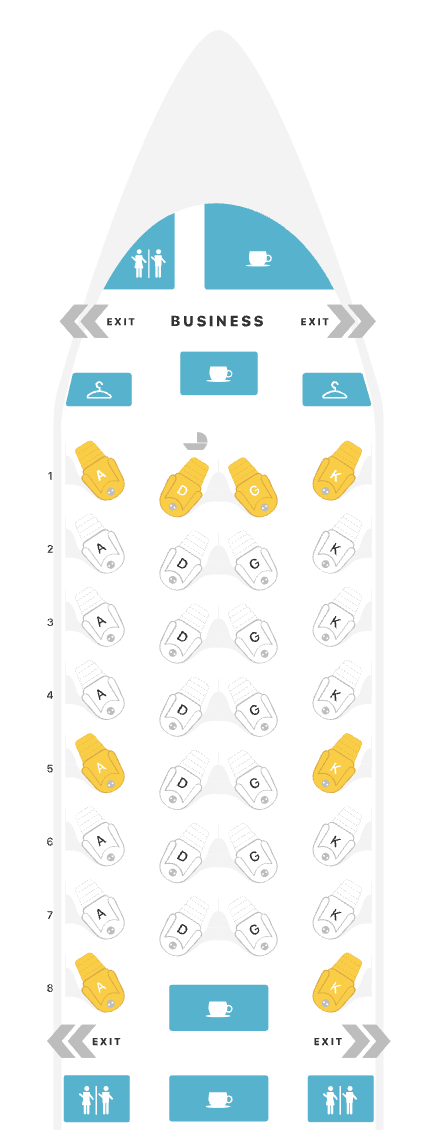
The seats are arranged in a reverse herringbone pattern, meaning you face away from the aisle. The seats are angled, giving every business class passenger extra legroom and personal space.

(I was slated to return on the 787-8, a shorter plane with fewer seats in business class, but a last-minute mechanical failure forced us onto a 787-9. Sounds like a lot of people got upgraded at the gate!)
The business class cabin was playing gentle classical music as we boarded.
There’s not a lot of engine noise, a welcome reprieve after a childhood of flying 737s. There was some noticeable electrical noise, however, during takeoff.
I found the seats to be reasonably private, facing away from other passengers. Although the walls between the pods aren’t exceptionally high, I found that the ambient lighting choices of those around me didn’t affect my experience much. Still, there’s no escaping the sounds of young children or nearby snoring.
On both flights, we got to cruising altitude quite quickly, and the rides were smooth throughout. Even so, I’m not sure I’ll ever get used to taking off and landing in a seat positioned at an angle to the fuselage.
On modern jets like the 787-9, the flights were quick, clocking in under 4 hours and 30 minutes gate-to-gate. Barely enough time to take in the full experience!
Air Canada 787 Business Class – Seat
Air Canada’s seats are more about function than form, lacking any standout visual design features.

I almost always prefer a window seat. I was seated in 3A on the outbound, and 3K (a mirror image) on the inbound.
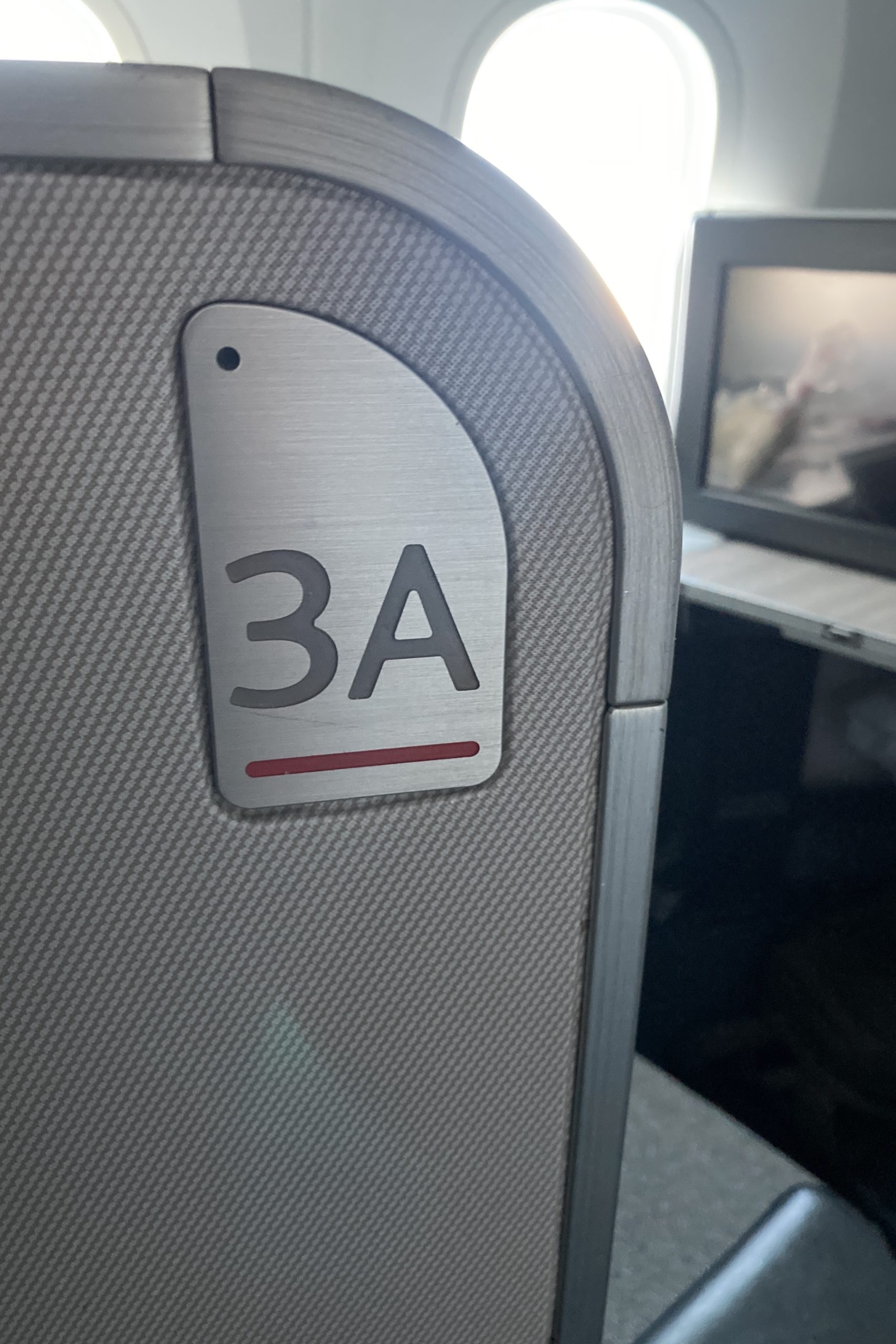
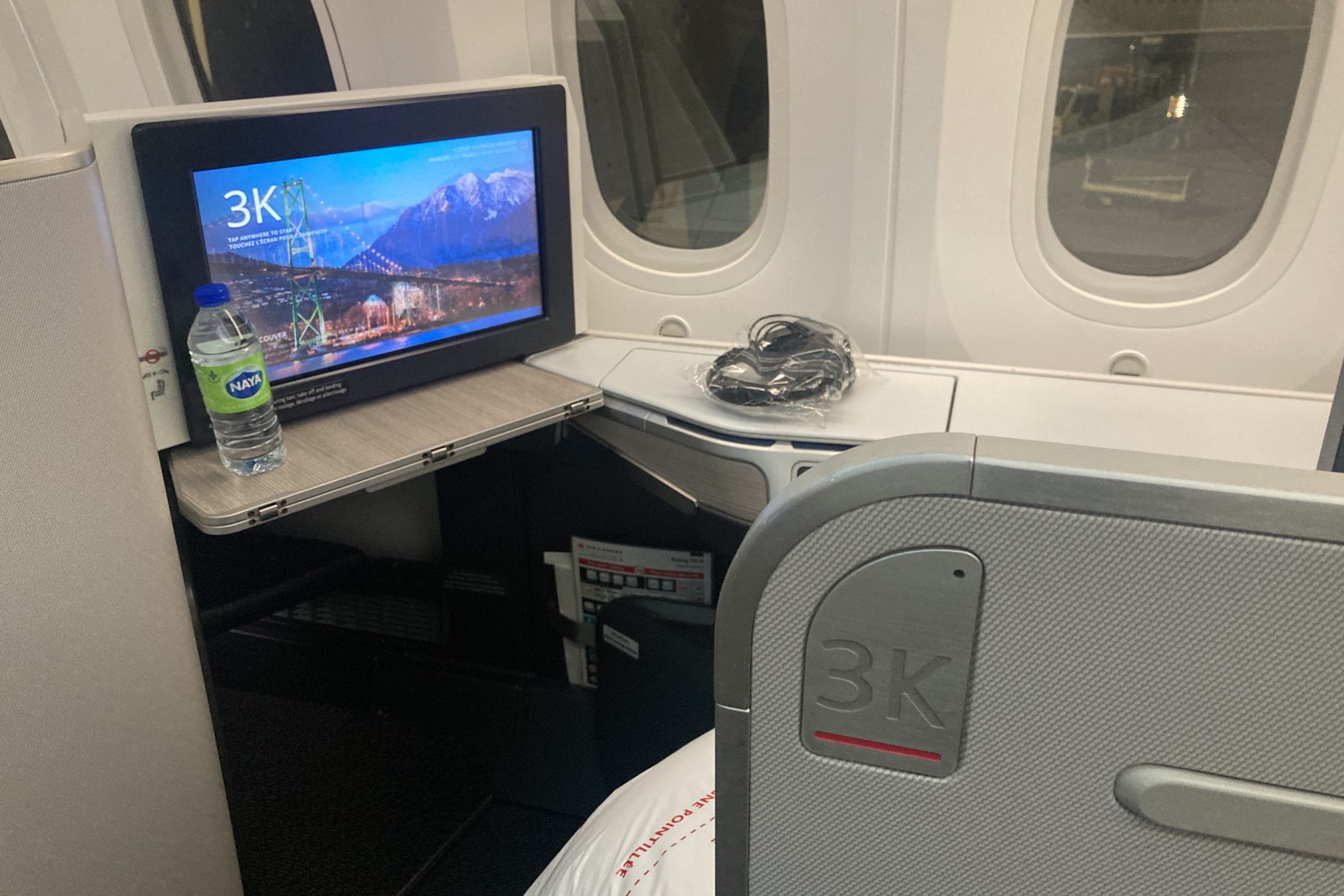
There’s tons of storage space for each passenger. The tall footwell has a shelf, with two distinct spots for storage.
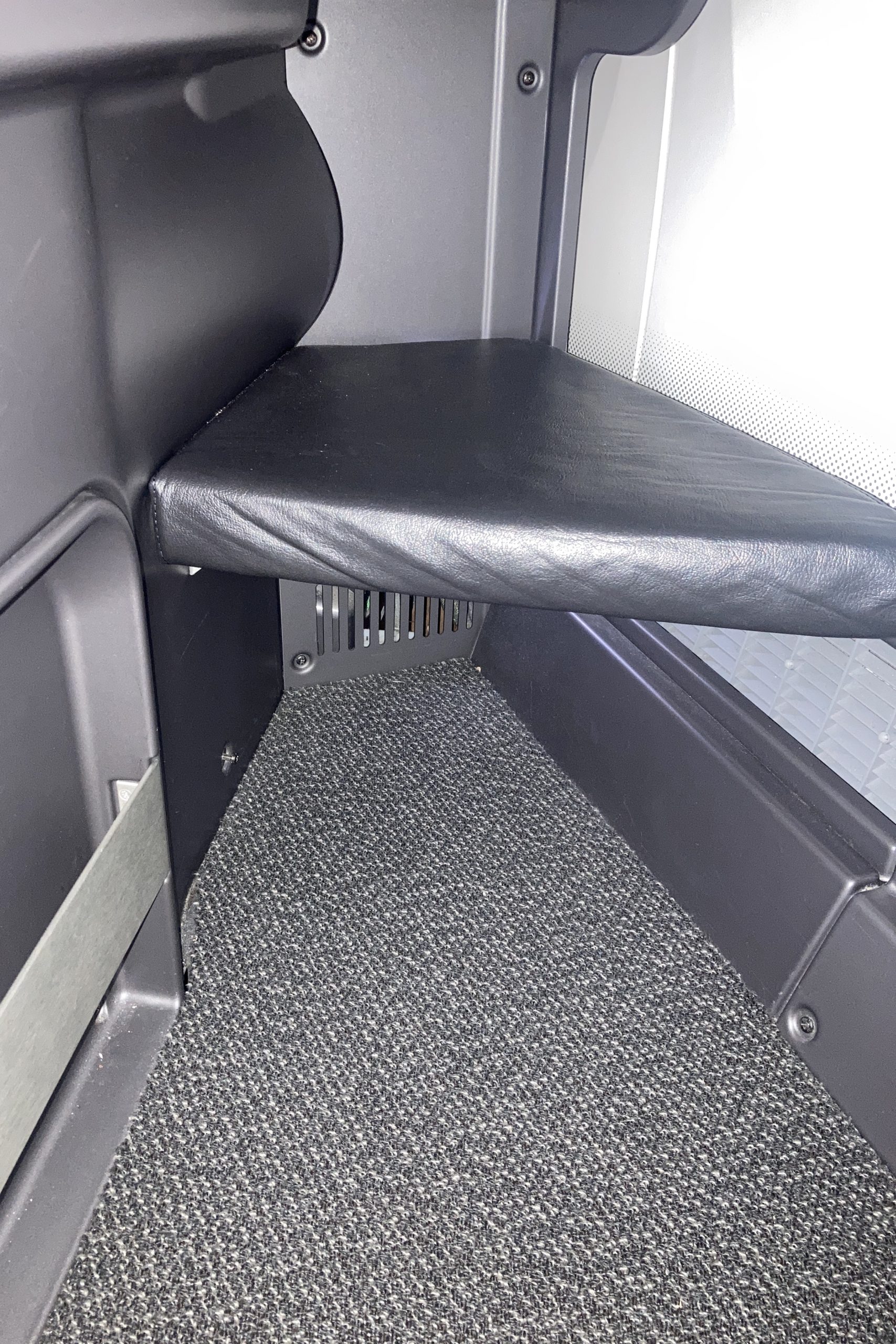
This space is tucked away under the entertainment screen, and filling both slots didn’t encroach on my legroom at all.
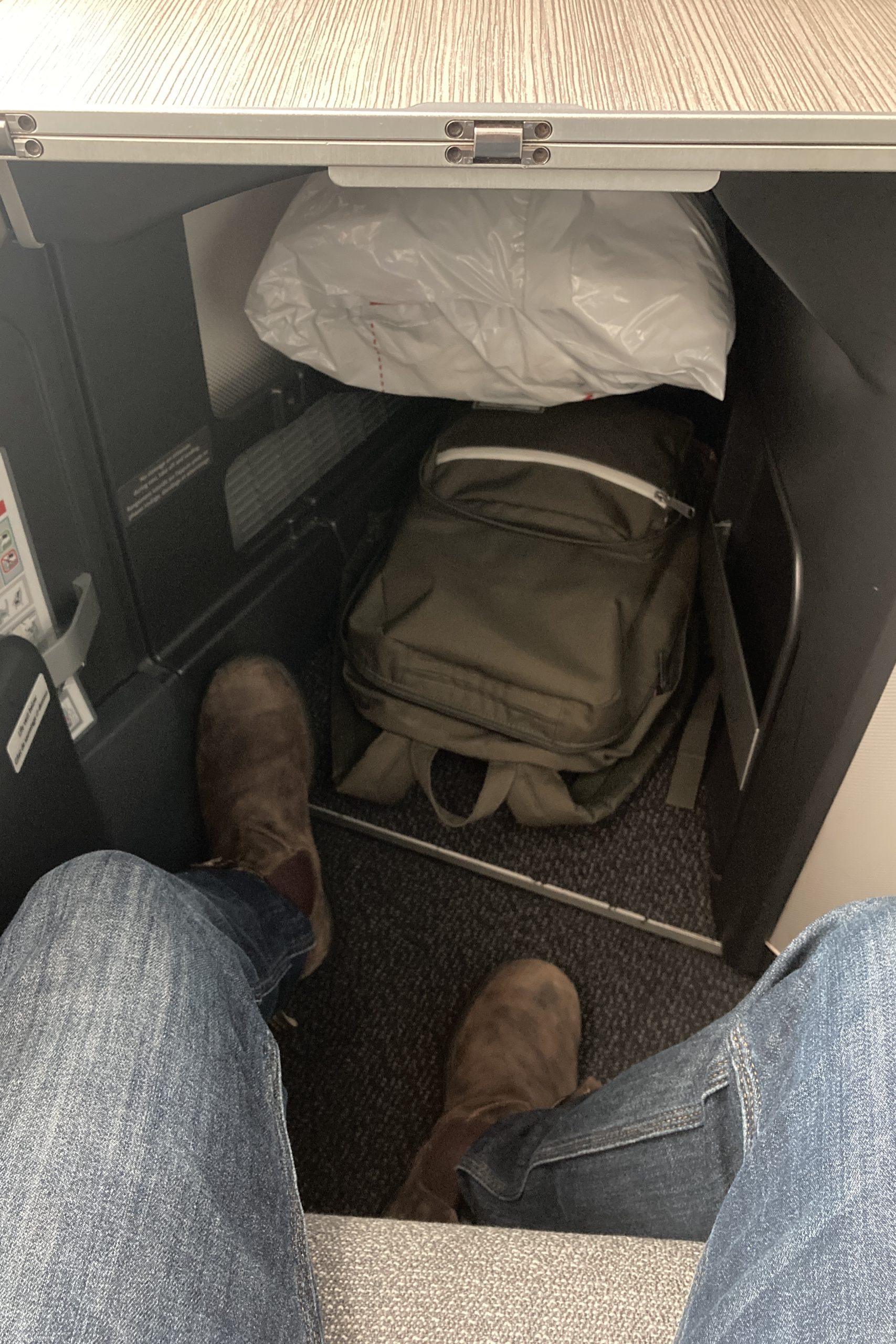
If you prefer not to keep your personal effects at your feet, there’s an entire overhead bin for each seat, so no worries about running out of space if you travel carry-on only.
The seat had two armrests: a small one on the window side, and a larger collapsible one on the aisle side. Pop up the collapsible armrest in flight for a cocoon of privacy, whether sitting or lying down.
There’s a chamber under the aisle-side armrest, which I used for stashing bottled water and snacks.

The tray table slides forward from under the screen, locking at three distinct checkpoints and folding between half-sized and full-sized. It was a bit tricky to figure out the latch mechanism, but once I got it working, it was quite useful.
I could comfortably set up with a meal or laptop near my body, with the freedom to slide the full tray back to make space to get out of my seat without packing everything up.
Overall, I found the pod to be a very functional office in the sky, as I sprawled out to fill my space.

For in-flight entertainment, each seat has a very large, high-resolution touchscreen.

Entertainment options are pretty standard, with a range of movies and TV shows including some new releases. There are also foreign-language films for a variety of audiences.
Additionally, there’s music provided by Stingray and a small selection of audiobooks and podcasts. There are also games available, which would be useful for any parents trying to keep their young children entertained.

The entertainment console is built into the window-side. Inside, there’s an adaptive power outlet, a USB outlet, and a headphone jack for whatever proprietary three-prong abomination the airline industry has been using lately.

It also doubles as a storage compartment, great for cable management for my airborne workstation.

The remote control has a high-resolution screen and is attached to a retractable cable. It has gaming controls and offers another way to navigate the main screen, which is actually useful as the main touchscreen is a bit of a reach in the spacious pod.
If you prefer to unplug, there’s a small reading light beside the headrest, angled to illuminate a book without blasting brightness all over the cabin.

I tend to bring all my necessary entertainment with me, so the aircraft’s catalogue doesn’t move the needle for me much. I’m quite content to put on the airshow in the background.
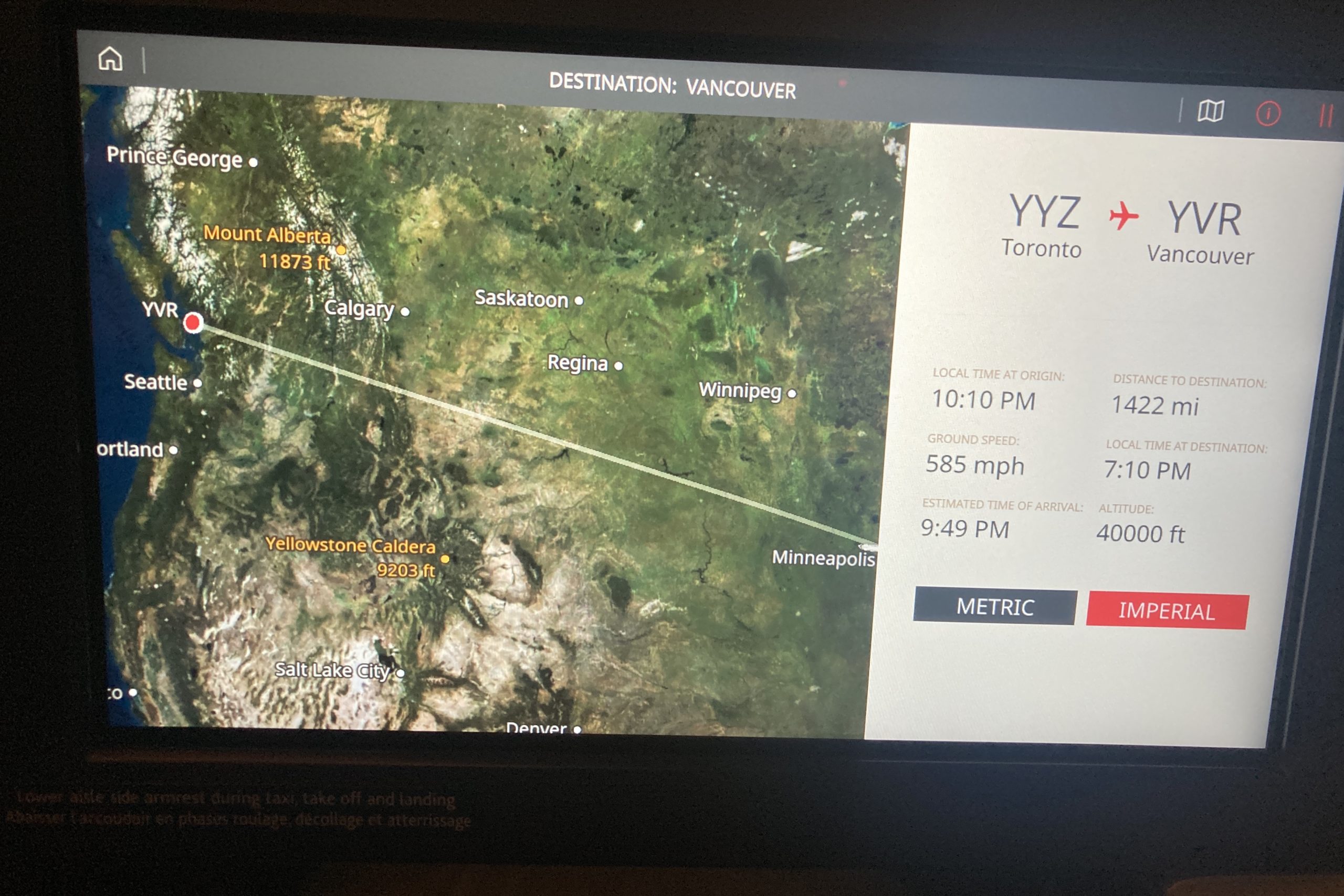
Most seats in the 787-9 business class cabin have two windows. Instead of a pull-down shade, they have an electronic dimmer, with a range of settings from clear daylight to borderline blackout.
Both windows are controlled in tandem from the main screen, remote, comfort control panel, or a button beneath the windows themselves.
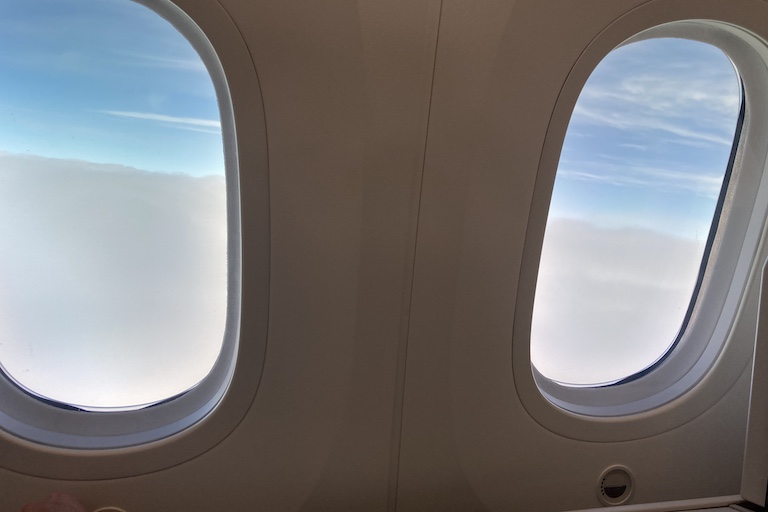

There’s a dedicated control panel for ambiance and comfort right beside the seat. From here, you can control the lighting, including the window dimmer, overhead lights, and footwell light.
You can adjust the position of the headrest and lumbar support, and the firmness of the entire “mattress”. You can also separately set the incline of the backrest and footrest, with presets for upright, relaxing, and lying down.
The seat itself is supportive and a bit firm in the default upright position, but this was fine as I spent most of the flight working.
Without an overnight flight, I didn’t properly enjoy the lie-flat feature of the seat, nor the cozy bedding provided. I did try it out briefly, having no trouble going fully supine even with a backpack underneath. Make sure to clear out the footwell, though, as that’s where your toes will end up.
Air Canada 787 Business Class – Food & Service
At the outset of the flights, the safety announcements were pretty standard. The crew thanked Aeroplan members for their loyalty through the travel downturn of the last two years.
Also, on all flights they affirmed the COVID-19 policy that masks must be worn onboard at all times, except when eating, drinking, or taking oral medication. This was a very welcome reassurance on my first flight since the pandemic began. I’m happy to say that 99% of passengers wore masks 99% of the time, as far as I could tell.
Overall, I found the service to be attentive, but not over-bearing – pretty much what I expected for a pandemic flight.
On the outbound, I arrived to a menu at my seat, along with bottled water, noise-cancelling headphones, and a COVID-19 sanitary kit including a spare mask in case I needed it.

On the inbound, the service director came around the cabin, to introduce herself and distribute menus and spare masks. I assume these weren’t set up upon boarding due to the last-minute aircraft swap. Headphones and bottled water did await my arrival, though.
Service was prompt, with food and drink orders taken after we’d barely taken to the skies.
On both flights, we first received a drink and some packaged almonds. I (rapidly) enjoyed a (single) sparkling wine on my outbound flight before exploring the rest of the bar menu, and settled into a South African shiraz for my return.
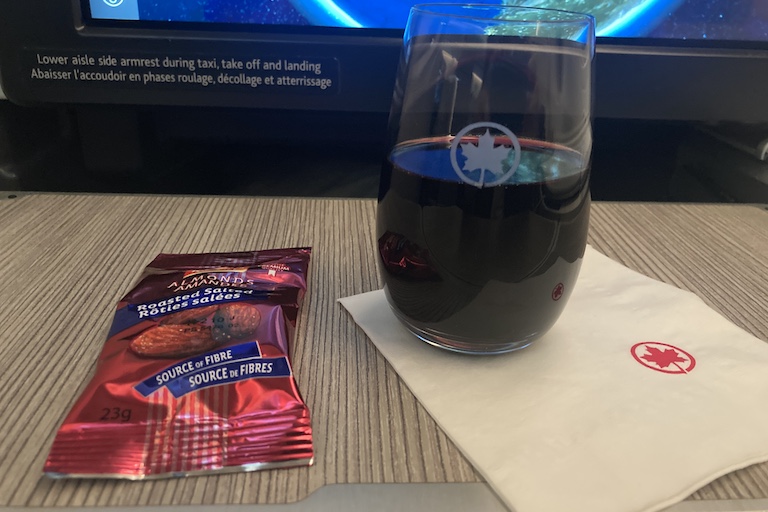
Then, we got an amuse bouche of smoked salmon, hard-boiled egg, tomatoes, capers, and avocado crema. This first course was rather tasty, if a bit simple – not that that’s a bad thing.

It also came with a bread roll, a chocolate cookie, and a basic salad consisting of mixed greens and red peppers – or what I like to call “Josh throws some ‘vegetables’ in a bowl and pats himself on the back for self-care.”
Individual portions of salt, pepper, butter, and a vinaigrette dressing were included to season to taste.
I was thrilled to receive my drinks in proper glassware. My meal also came with a cloth napkin and stainless steel flatware. Suffice to say, food and drink service is pretty much back to normal, a welcome treat after a long 18 months without air travel.

There were different main courses served on each flight. For the eastbound leg, I ordered the chicken dish, with a Brazilian-style sauce and mixed cooked vegetables. I enjoyed it, but I’ve had comparable meals in economy.

For the westbound leg, I ordered the beef dish, which paired exceptionally well with a steady stream of red wine. My delicious plate included beef tenderloin, fingerling potatoes, and steamed green beans.

For dessert, I took the cheese plate, with oka, cheddar, and brie, plus a token apple slice and a few grapes. The flight attendant wasted no time offering me a port pairing.

The cheese-to-cracker ratio is absurdly high – I had to ask for extra crackers. I’d recommend saving the nuts from before, to eat with the cheese plate.
My pecan allergy forced me to skip Chef Park’s signature brownie dish, but between all the complimentary snacks at the hotel and airport lounges, plus the appetizer and main dish in flight, I could barely find room for another course.
Towards the end of the flight, the attendants came around with a bag of Miss Vickies chips and a Lindt dark chocolate bar, packaged a bit excessively (presumably for COVID-19 sanitary reasons). These proved useful for snacking after I had deplaned.

Impressions from My First Flight of the Pandemic Era
I have a confession to make: this was my first business class flight. Ever.
I know I talk a big game with Miles & Points, but it’s time to put it into context. I got into the hobby at an awkward time, and the pandemic hit as soon as I had enough points to be dangerous. Also, although I definitely enjoy a bit of healthy lifestyle creep, I don’t incessantly rely on the finer redemptions to fuel my travel aspirations and life goals.
But this wasn’t just my first proper business class experience. It was also my first flight since the pandemic began, and that resonated with me much more strongly than any hard or soft product.
What stood out the most, above the lie-flat seats, juicy beef tenderloin, and free-flowing drinks, was how normal the travel experience felt.
A domestic trip is much easier than juggling testing requirements when returning to Canada, and the airport experience was a breeze and will remain so until vaccine checks are implemented. Aside from ticking a few extra boxes on the check-in form, and everyone wearing masks, my journey didn’t feel any different than before.
I’m thankful to have things like airport lounge access and a spacious business class seat. These really eased the travel experience for me, with the peace of mind that I have just a bit more distance from potential vectors of disease transmission in an inherently crowded space.
For anyone else who’s been a bit concerned about the air travel experience this year, I’d highly recommend finding a cost-effective way to book business class.
I’ve admittedly been a bit bearish on pandemic travel, and I’m personally not ready to go through all the red tape and brain-tickles required to leave the country. But I must say, it feels darn good to break the seal in a comfortable way, and to be in the sky again!
Conclusion
I had a great experience on Air Canada’s Boeing 787-9 Dreamliner in Signature Class.
For a relatively quick trip cross-country, it’s not a level of luxury I absolutely needed, but given the option between this or standard recliner seats at the same price point, I’d always try to arrange my travel schedule to take the Signature Class cabin instead.
As someone who’s just starting to reap the rewards of my Miles & Points efforts, I thought that Air Canada Signature Class was a fantastic first taste of a premium redemption.
It didn’t set the bar unreasonably high, but it certainly wet my whistle and motivated me to reach even higher, offering me a glimpse of what’s to come in my award travel odyssey.
At the very least, I’m glad that such a product exists for domestic journeys, so we can enjoy a little something extra on frequent trips within our own borders.











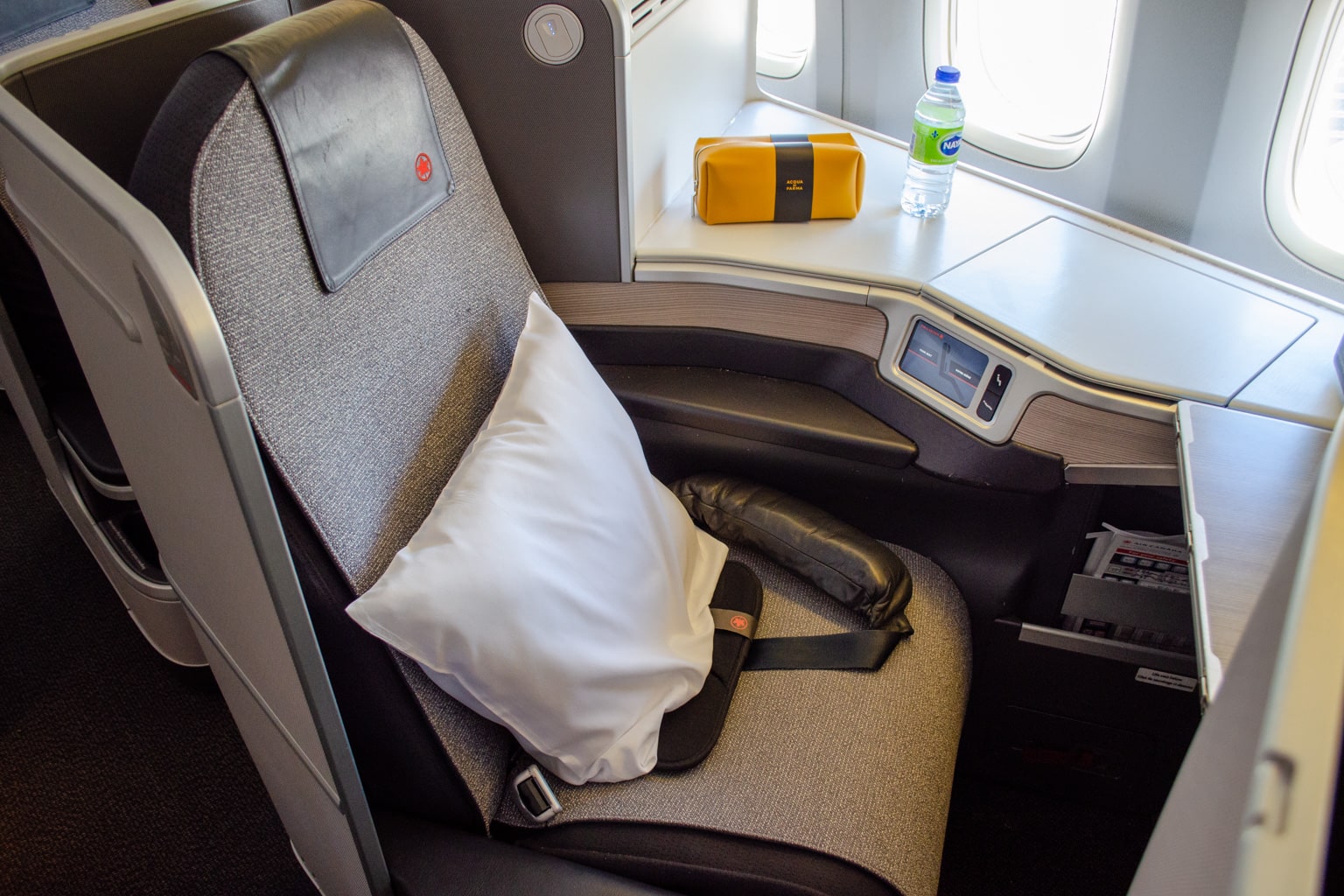


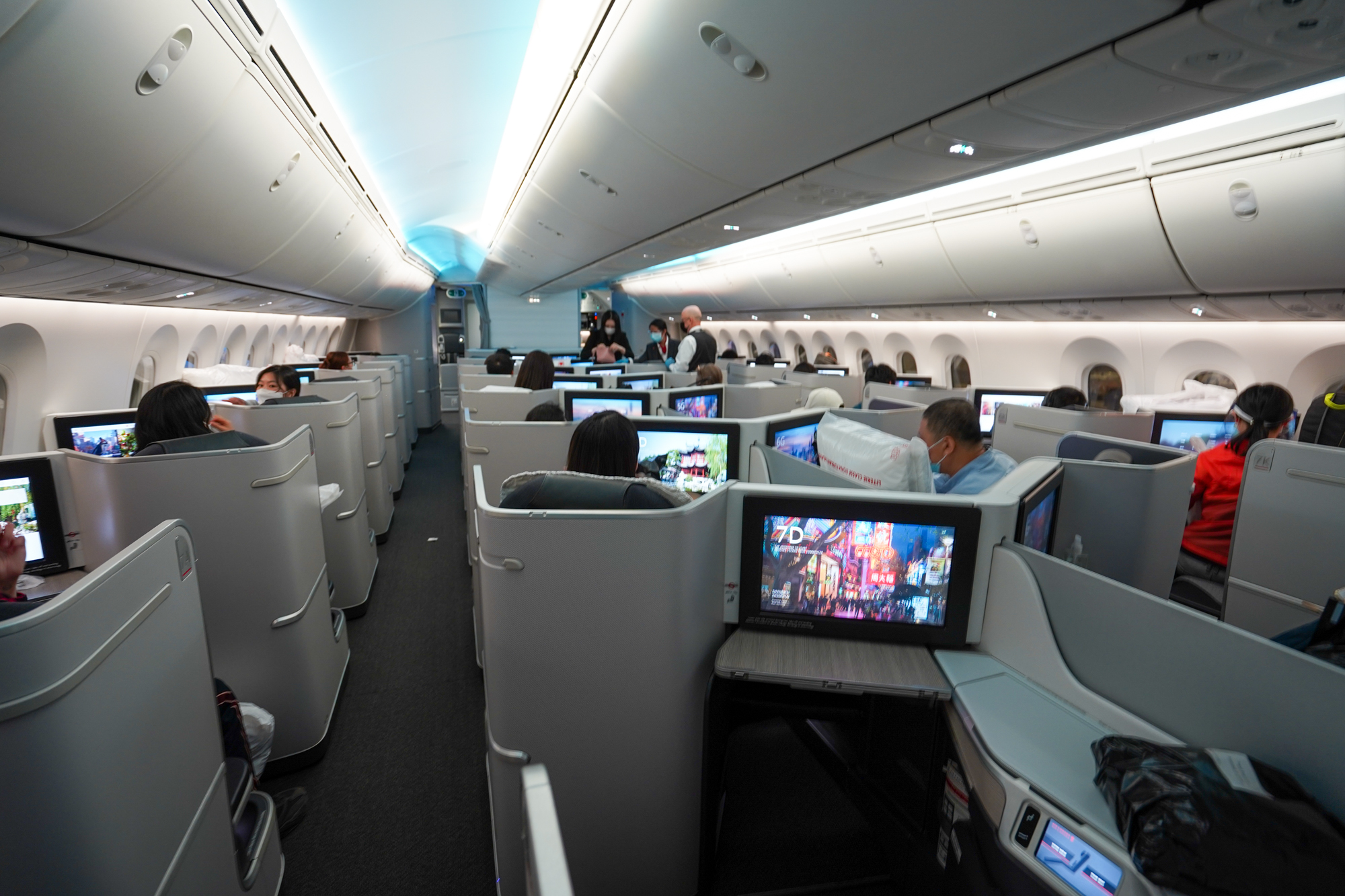
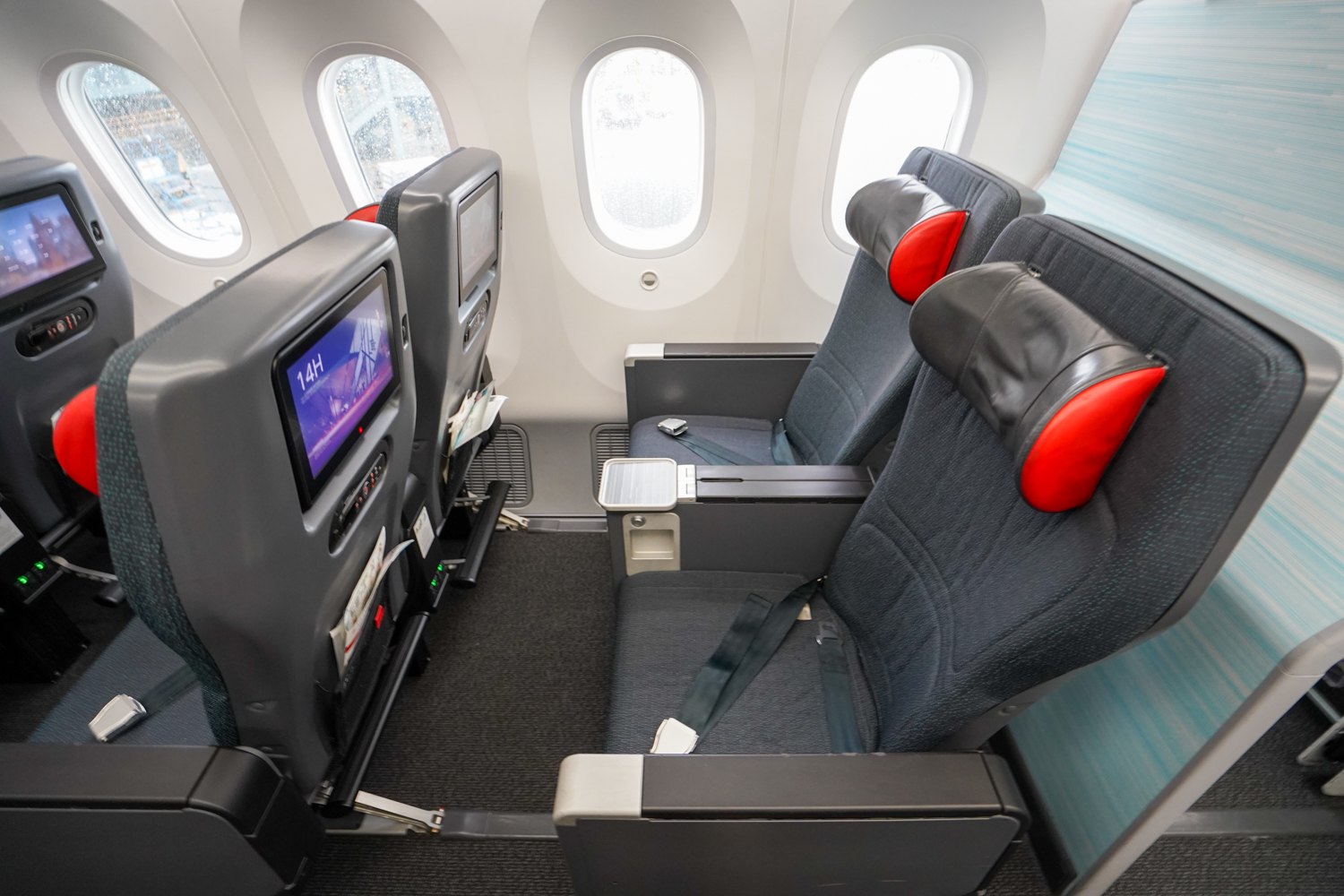
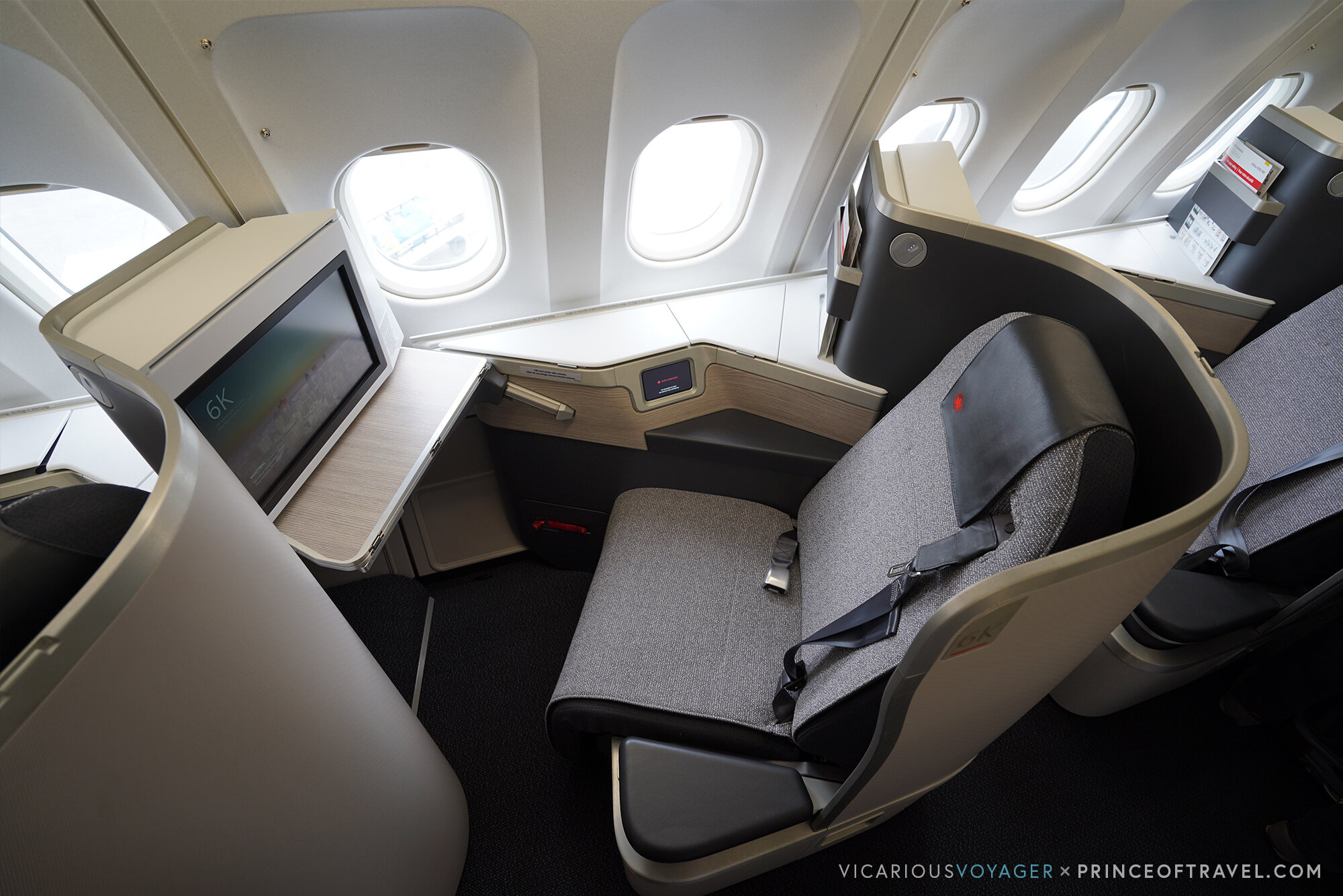

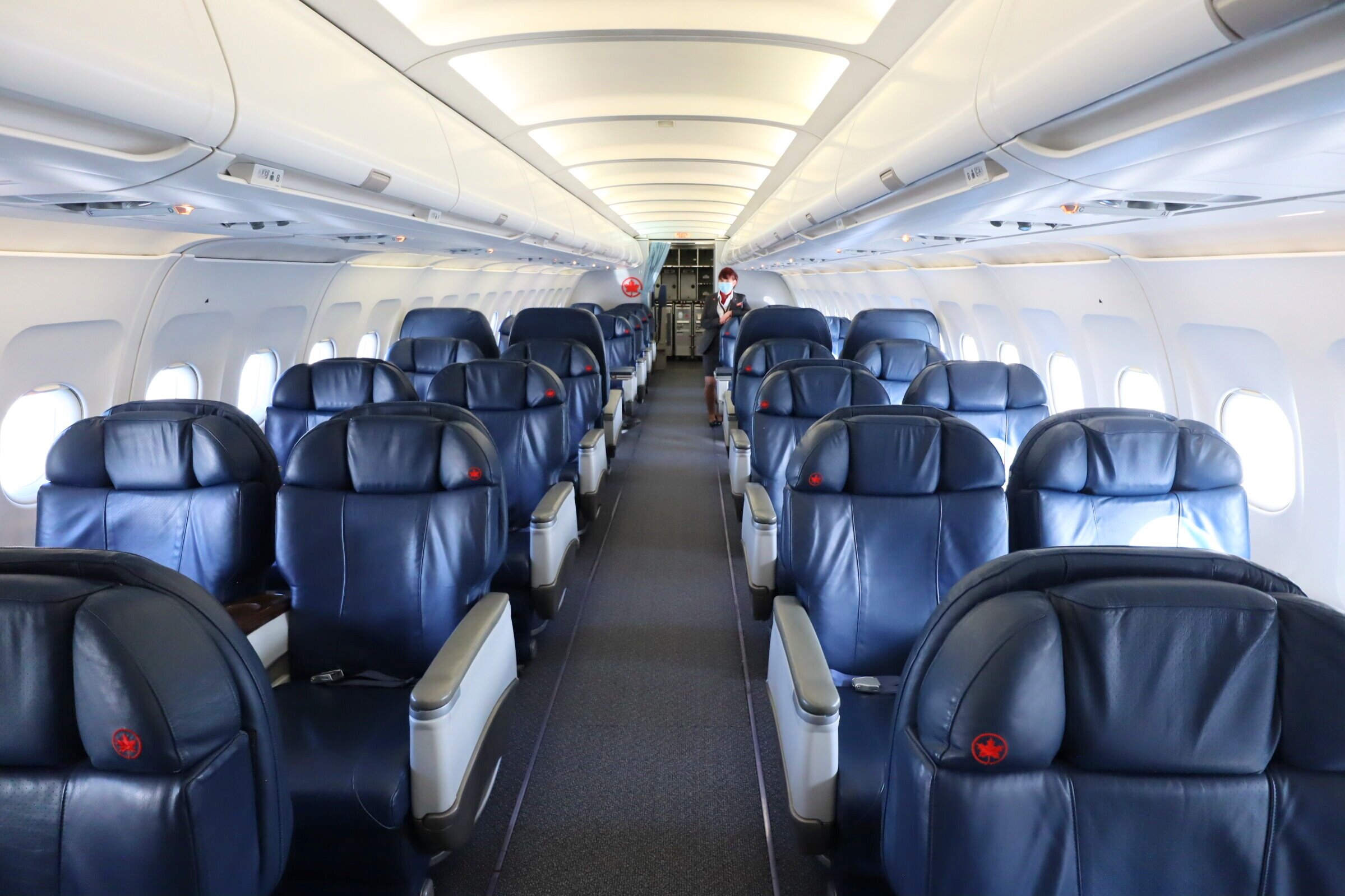
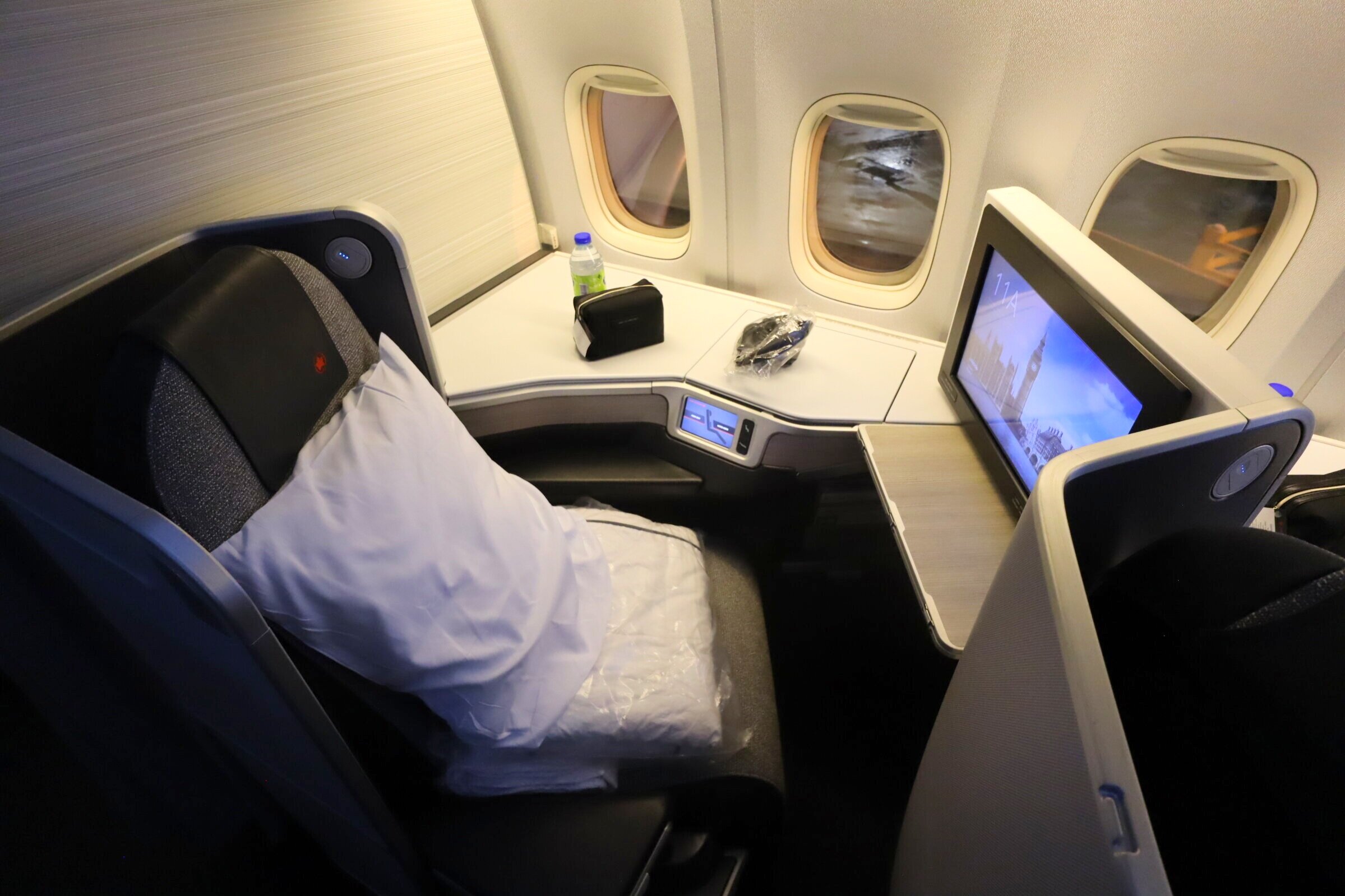
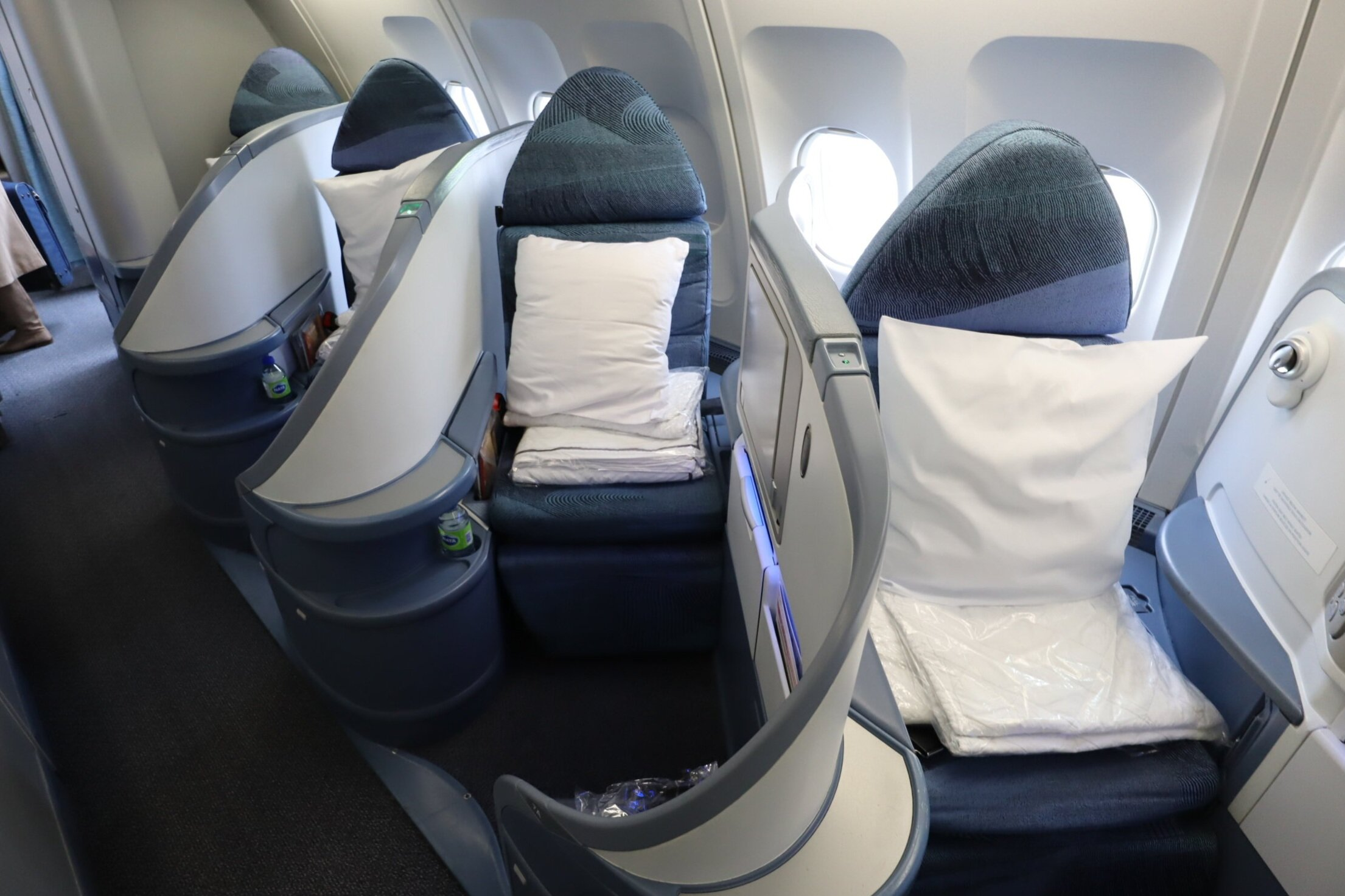










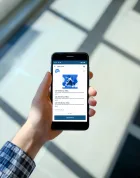
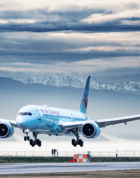
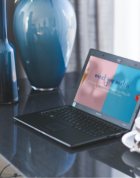

I flew this flight on Wednesday on business class and I really enjoyed it only paid $750 and some tokens to upgrade.
May I know how did you add the stopover in YYZ for the inbound flight? I thought the 5000 points stopover is not allowed within NA flights?
I should clarify, I cancelled YVR-YOW and rebooked as YVR-YYZ, making my way to Ottawa separately. No domestic stopover tricks unfortunately.
Looks quite average, but ‘superior’ in terms of North American carriers. Not many choices for domestic, though am curious how WestJet’s service stacks vs AC’s.
It’s good to start at the bottom with your first business class being AC!
It only gets better as you fly other carriers.
You have no idea how relieved I am to have done this before Emirates First in January.
The food in AC Signature biz is almost exactly the same as the food in PE, so while it’s an improvement from the height of the pandemic, it’s still not quite pre-pandemic levels.
Thank you for reviewing this! I’m planning this to be my partner’s first Business class too (and my first Air Canada Business class). I hope it will be a nice experience for a red-eye flight. For the lie-flat seat, did the flight attendant “make the bed” for you, or you did it yourself?
Air Canada never make your bed for sleeping on any flight including transpacific long haul, that’s an ‘Asian airline’ thing. For the red-eye flight as you stated, I assume it will be the overnight from west to the east, eat in the lounge prior to the flight and go straight to bed as soon as take off. You don’t want to miss a second for the 4 hours sleep.
Will be doing this flight EOY. Great to feel like travelling again! The low cracker to cheese ratio was noted.